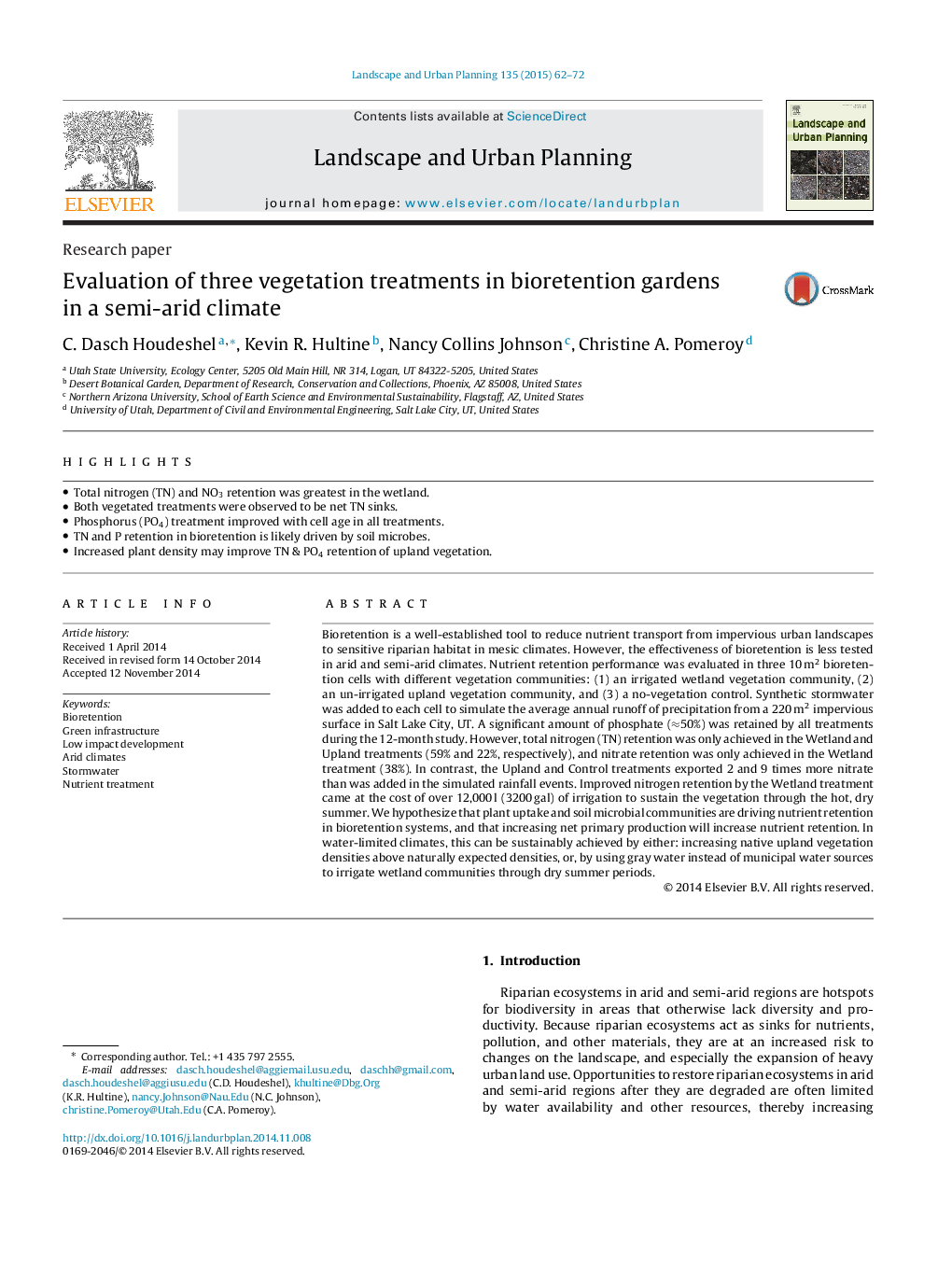| کد مقاله | کد نشریه | سال انتشار | مقاله انگلیسی | نسخه تمام متن |
|---|---|---|---|---|
| 1049194 | 1484623 | 2015 | 11 صفحه PDF | دانلود رایگان |
• Total nitrogen (TN) and NO3 retention was greatest in the wetland.
• Both vegetated treatments were observed to be net TN sinks.
• Phosphorus (PO4) treatment improved with cell age in all treatments.
• TN and P retention in bioretention is likely driven by soil microbes.
• Increased plant density may improve TN & PO4 retention of upland vegetation.
Bioretention is a well-established tool to reduce nutrient transport from impervious urban landscapes to sensitive riparian habitat in mesic climates. However, the effectiveness of bioretention is less tested in arid and semi-arid climates. Nutrient retention performance was evaluated in three 10 m2 bioretention cells with different vegetation communities: (1) an irrigated wetland vegetation community, (2) an un-irrigated upland vegetation community, and (3) a no-vegetation control. Synthetic stormwater was added to each cell to simulate the average annual runoff of precipitation from a 220 m2 impervious surface in Salt Lake City, UT. A significant amount of phosphate (≈50%) was retained by all treatments during the 12-month study. However, total nitrogen (TN) retention was only achieved in the Wetland and Upland treatments (59% and 22%, respectively), and nitrate retention was only achieved in the Wetland treatment (38%). In contrast, the Upland and Control treatments exported 2 and 9 times more nitrate than was added in the simulated rainfall events. Improved nitrogen retention by the Wetland treatment came at the cost of over 12,000 l (3200 gal) of irrigation to sustain the vegetation through the hot, dry summer. We hypothesize that plant uptake and soil microbial communities are driving nutrient retention in bioretention systems, and that increasing net primary production will increase nutrient retention. In water-limited climates, this can be sustainably achieved by either: increasing native upland vegetation densities above naturally expected densities, or, by using gray water instead of municipal water sources to irrigate wetland communities through dry summer periods.
Journal: Landscape and Urban Planning - Volume 135, March 2015, Pages 62–72
